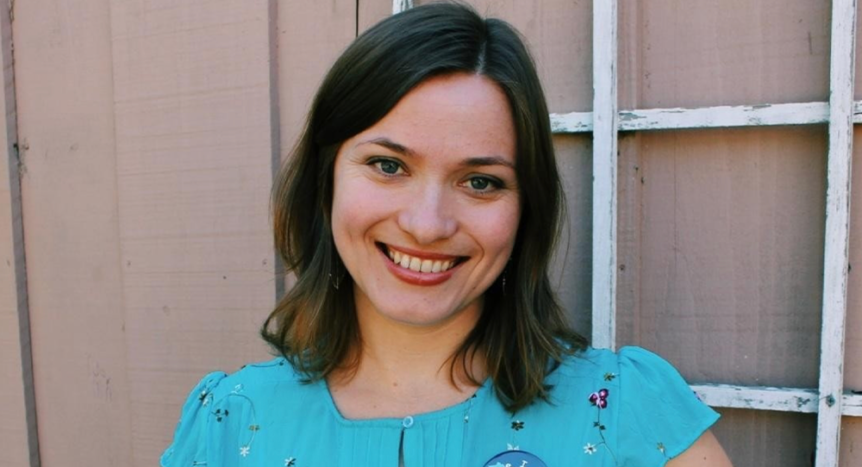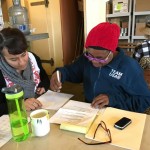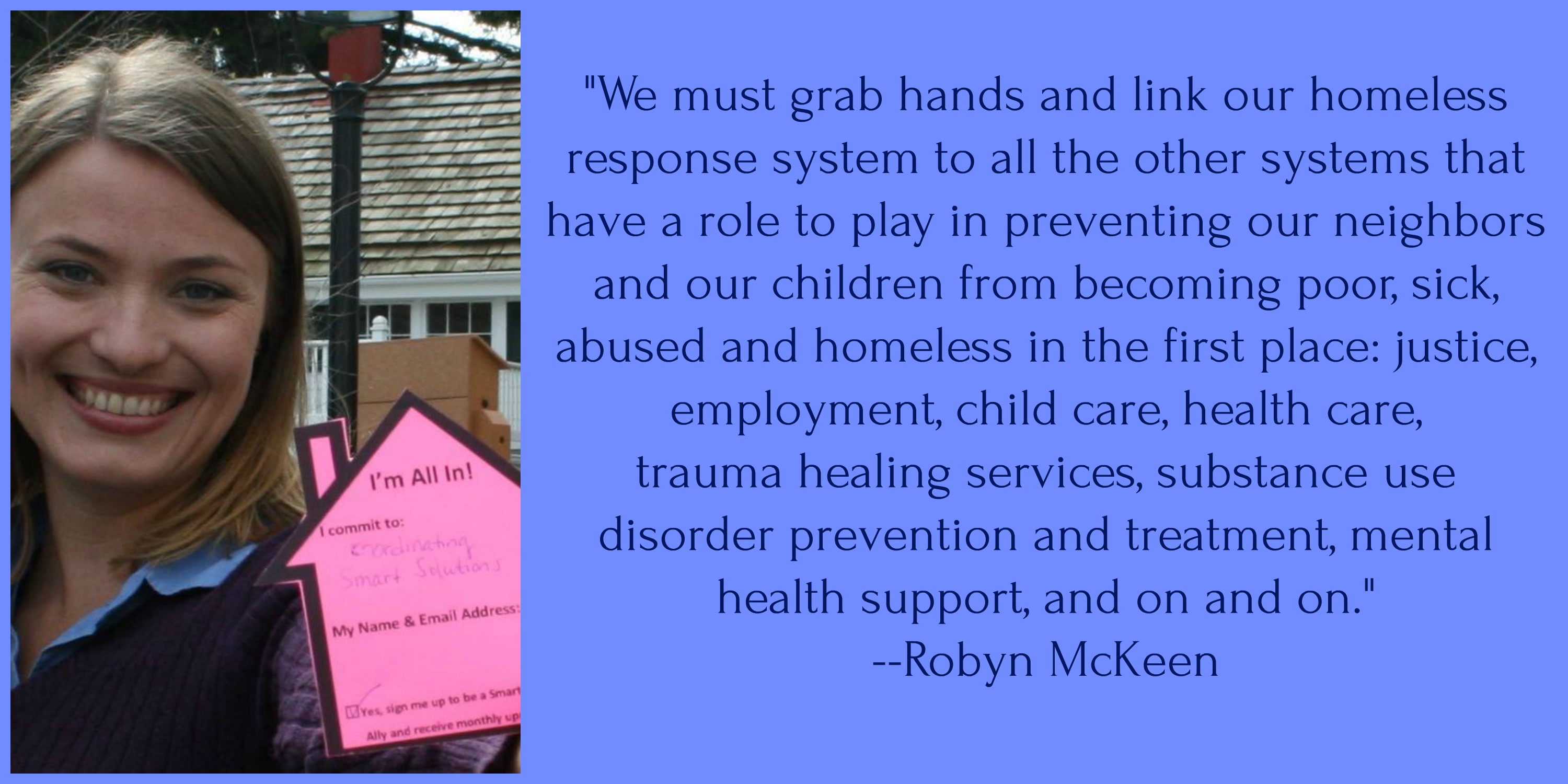At the Smart Solutions to Homelessness Community Recognition Reception on November 12, 2017, Robyn McKeen presented about “Coordinated Entry,” a strategic priority of our community’s All In Strategic Plan to Prevent, Reduce and Eventually End Homelessness. Homeless Garden Project staff and board members present were inspired and moved by Robyn’s presentation and so we share it with you here.
Smart Path Project Spotlight
Smart Path to Housing and Health is the name of our local coordinated entry system. Coordinated entry is a systems change that streamlines the assessment, eligibility review, referral, and program placement process for programs providing housing services to people experiencing homelessness in our community. Smart Path is a project of our local Continuum of Care, the Homeless Action Partnership- HAP, and the Homeless Services Center is the lead agency for implementation of Phase 1 which will be launching in early 2018.
Many of you have joined us in designing a coordinated entry system that will improve the experience of accessing existing services by simplifying the process, ensuring people are treated with dignity at each step. Other goals of Smart Path include using our community’s limited homeless housing resources as effectively as we can, assisting people to prevent them from becoming homeless in the first place, generating accurate information to be used to improve services and secure new resources, and linking people as quickly as possible to essential services and resources. The process flow for Smart Path includes:
- Outreach and Engagement– Smart Path access points will be located throughout the county.
- Screening– Not everyone is going to be in a situation where it is appropriate for them to participate in Smart Path that day. Warm handoffs will be made to domestic violence and other crisis service providers as needed.
- Diversion– Diversion means helping someone to connect with other forms of housing support they may have- family, friends, deposit assistance.
- Resource Linkage– We are all acutely aware of the significant gap between the available housing resources and the need in our community. One thing we can ensure immediately is that everyone who participates in Smart Path is connected with as many non-housing essential resources as possible like meals, health care, showers, and government benefits.
- Assessment– One common assessment will be used to collect the eligibility and other information necessary to send solid referrals to each of the housing programs countywide that will participate in Smart Path. We will be using a user-friendly, mobile compatible new Homeless Management Information System as the Smart Path database. The assessment consists of essential eligibility information like household structure and veteran status. In addition, the VI-SPDAT- the Vulnerability Index-Service Prioritization Decision Assistance Tool- will be used to help prioritize housing referrals based on housing program type and participants’ vulnerability based on health and social risks.
- Program Housing Match– When a program has an opening, a referral will be made based on the program’s eligibility criteria and the participant’s vulnerability as suggested by the VI-SPDAT tool.
- Housing and Retention– Once a participant is accepted into a program, our phenomenal housing service providers pick up where Smart Path leaves off, providing the care management, housing navigation, and housing retention support that truly enables us to reduce and end homelessness.
I hope you will reach out to me so we can talk about how Smart Path and your projects cansupport each other. Smart Path is a significant systems change. We are shifting from our agencies working in siloes of excellence to working in alignment towards our shared goals. We are shifting from programs enrolling people based on first-come, first-served and sheer luck to intentionally prioritizing those in the most need. This is not easy stuff!
Those of us working with people experiencing homelessness are often the very last option people have for support. This is especially true for the most vulnerable people. If we are the very last safety net before living and dying their last days on the streets, then perhaps it is time to consider that we prioritize those that are falling through right now. It will be hard. Really hard, to bring in the hardest-to-house individuals and support them to locate and retain housing in this community. Really hard to turn aside from a person, equally deserving, who is able to navigate these systems with just a little more ease, a little more capacity. But if we do not use our expertise and commitment to prioritize our resources for the most vulnerable, who will?
I tell you honestly that it is entirely unfair that we be faced with these decisions. It is unfair, hard, and never enough. Coordinated Entry and Housing First will not fix that. But these tools are showing up as some of the best ways in our existing societal structure to keep fewer people from spending their last days on the streets.
And it is not enough. It will never be enough alone. We must grab hands and link our homeless response system to all the other systems that have a role to play in preventing our neighbors and our children from becoming poor, sick, abused and homeless in the first place: justice, employment, child care, health care, trauma healing services, substance use disorder prevention and treatment, mental health support, and on and on.
Homelessness is not simply the result of a housing crisis, although that is a huge piece. I believe it is a community, societal problem that has developed over time as a result of policies and social norms that build inequity of resources, opportunities, and perceived human value. Today, as I look around this room, I am grateful that we are the community. Hopeful because we are the society. And we are shaping our policies and values right now. What can we create together? Thank you so much for all the time and love you give to our community.
Robyn McKeen works at the Homeless Services Center as the Smart Path Project Manager, leading the development of the countywide Santa Cruz County coordinated entry system. Prior, she worked as a community organizer at the United Way of Santa Cruz County, resource coordinator at EAH Housing in Santa Clara County, and children’s program manager at YWCA Pathways for Women in Snohomish County, WA. She received her BA in Anthropology from UC Santa Cruz.







